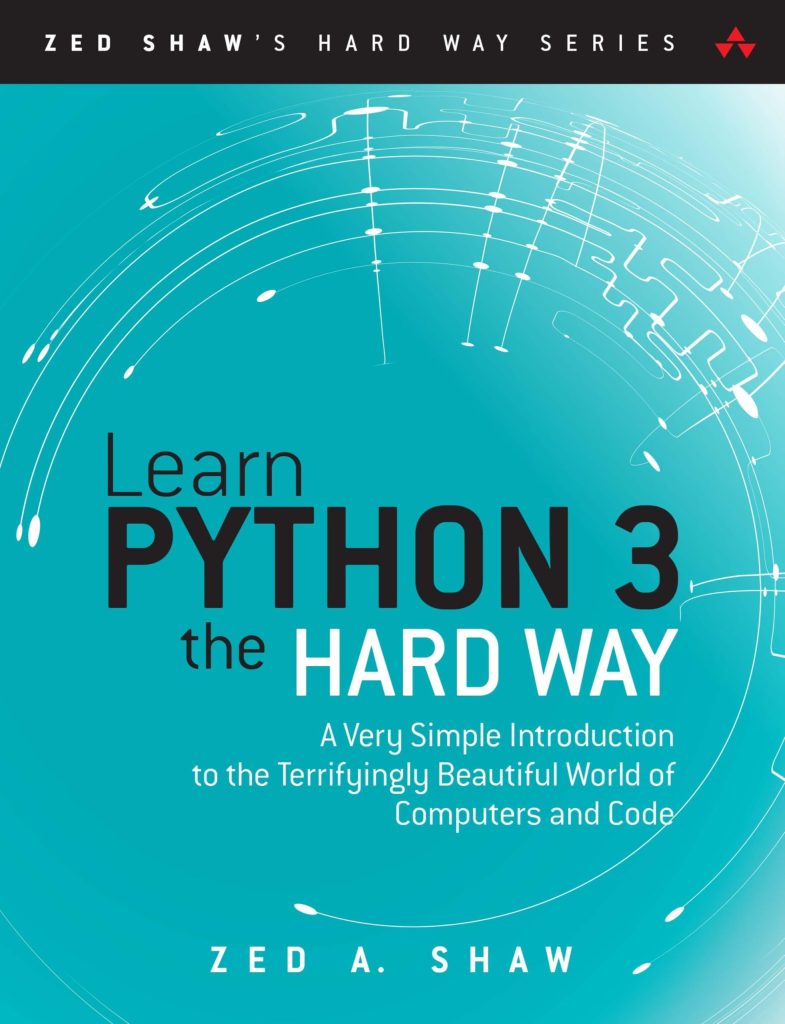
In Python’s datetime module, the tzinfo class provides an abstract base class for defining custom time zone information. This class is designed to handle time zone-related calculations, such as adjusting for daylight saving time and determining offsets from UTC. By creating a custom tzinfo subclass, you can define the behavior of time zones that aren’t covered by Python’s built-in time zone implementations.
The tzinfo class has two essential methods that you need to implement in your custom subclass:
- This method returns the UTC offset for the given datetime instance
dt. The offset should be a timedelta object representing the time difference between the local time and UTC. - This method calculates the daylight saving time (DST) adjustment for the given datetime instance
dt. It should return a timedelta object representing the DST offset, or None if DST is not in effect.
Additionally, there are two optional methods you can implement:
- This method returns a string representing the time zone name for the given datetime instance
dt. - This method converts a datetime instance from UTC to the local time zone, and returns a datetime object representing the local time.
By implementing these methods in your custom tzinfo subclass, you can define the behavior of time zones according to your specific requirements. This allows for accurate handling of time zone offsets, daylight saving time adjustments, and other time zone-related calculations within Python’s datetime module.
from datetime import tzinfo, timedelta, datetime
class MyTimezone(tzinfo):
def utcoffset(self, dt):
# Calculate and return the UTC offset for the given datetime instance
pass
def dst(self, dt):
# Calculate and return the DST adjustment for the given datetime instance
pass
def tzname(self, dt):
# Return the name of the time zone for the given datetime instance
pass
def fromutc(self, dt):
# Convert a datetime instance from UTC to the local time zone
pass
In the following subsections, we’ll explore how to implement these methods and create a fully functional custom timezone class that handles various time zone-related scenarios.
Implementing a Basic Custom Timezone Class
To create a basic custom time zone class, you need to implement the utcoffset and dst methods, which are required by the tzinfo abstract base class. The utcoffset method should return the UTC offset for the given datetime instance, while the dst method should return the daylight saving time (DST) adjustment, if applicable.
Here’s an example of a simple custom time zone class that represents a fixed offset from UTC, without any DST adjustment:
from datetime import tzinfo, timedelta
class FixedOffsetTimezone(tzinfo):
"""
A simple custom time zone class with a fixed offset from UTC.
"""
def __init__(self, offset, name):
"""
Initialize the time zone with a given offset and name.
Args:
offset (timedelta): The fixed offset from UTC.
name (str): The name of the time zone.
"""
self._offset = offset
self._name = name
def utcoffset(self, dt):
"""
Return the fixed UTC offset for the given datetime instance.
Args:
dt (datetime): The datetime instance for which to calculate the offset.
Returns:
timedelta: The fixed UTC offset.
"""
return self._offset
def dst(self, dt):
"""
Return the daylight saving time adjustment for the given datetime instance.
Args:
dt (datetime): The datetime instance for which to calculate the DST adjustment.
Returns:
timedelta: The DST adjustment, which is None in this case (no DST).
"""
return None
def tzname(self, dt):
"""
Return the name of the time zone.
Args:
dt (datetime): The datetime instance for which to return the time zone name.
Returns:
str: The name of the time zone.
"""
return self._name
In this example, the FixedOffsetTimezone class takes an offset and a name as arguments during initialization. The utcoffset method simply returns the fixed offset, while the dst method always returns None, indicating no DST adjustment. The tzname method returns the name of the time zone.
You can create an instance of this custom time zone class and use it with Python’s datetime objects:
from datetime import datetime # Create a custom time zone instance with a fixed offset of +5 hours custom_tz = FixedOffsetTimezone(timedelta(hours=5), 'Custom Timezone') # Create a datetime instance with the custom time zone dt = datetime(2023, 6, 1, 12, 0, tzinfo=custom_tz) print(dt) # Output: 2023-06-01 12:00:00+05:00 print(dt.tzname()) # Output: Custom Timezone
This basic implementation demonstrates how to create a custom time zone class with a fixed offset from UTC. In the next subsection, we’ll explore how to handle daylight saving time changes and more complex time zone behaviors.
Handling Daylight Saving Time Changes
Many time zones observe daylight saving time (DST), which involves adjusting the clocks forward or backward by one hour at specific times of the year. To accurately handle DST changes in your custom time zone class, you need to implement the dst method in addition to the utcoffset method.
The dst method should return a timedelta object representing the DST adjustment for the given datetime instance. If DST is in effect, it should return the appropriate offset (usually 1 hour). If DST is not in effect, it should return None or a zero timedelta.
Here’s an example of a custom time zone class that handles DST changes based on a predefined set of DST transition rules:
from datetime import tzinfo, timedelta, datetime
class CustomTimezone(tzinfo):
def __init__(self, utc_offset, dst_start, dst_end, dst_offset):
self._utc_offset = utc_offset
self._dst_start = dst_start
self._dst_end = dst_end
self._dst_offset = dst_offset
def utcoffset(self, dt):
return self._utc_offset + self.dst(dt)
def dst(self, dt):
if self._dst_start <= dt.replace(tzinfo=None) < self._dst_end:
return self._dst_offset
else:
return timedelta(0)
def tzname(self, dt):
if self.dst(dt) == timedelta(0):
return "Standard Time"
else:
return "Daylight Time"
In this example, the CustomTimezone class takes the following arguments during initialization:
- The base UTC offset for the time zone (e.g., timedelta(hours=5) for UTC+5).
- A datetime object representing the start of the DST period.
- A datetime object representing the end of the DST period.
- The DST offset (usually timedelta(hours=1)).
The utcoffset method calculates the total offset from UTC by adding the base UTC offset and the DST adjustment returned by the dst method.
The dst method checks if the given datetime instance falls within the DST period defined by the dst_start and dst_end parameters. If it does, it returns the DST offset (dst_offset). Otherwise, it returns a zero timedelta, indicating no DST adjustment.
The tzname method returns a string representing the time zone name based on whether DST is in effect or not.
Here’s an example of how you can use the CustomTimezone class:
# Define the DST transition rules (for example, US Eastern Time)
dst_start = datetime(2023, 3, 12, 2) # Second Sunday in March at 2 AM
dst_end = datetime(2023, 11, 5, 2) # First Sunday in November at 2 AM
# Create a custom time zone instance
eastern_tz = CustomTimezone(
utc_offset=timedelta(hours=-5),
dst_start=dst_start,
dst_end=dst_end,
dst_offset=timedelta(hours=1)
)
# Create a datetime instance during DST
dt_dst = datetime(2023, 6, 1, 12, 0, tzinfo=eastern_tz)
print(dt_dst) # Output: 2023-06-01 12:00:00-04:00
# Create a datetime instance outside DST
dt_std = datetime(2023, 12, 1, 12, 0, tzinfo=eastern_tz)
print(dt_std) # Output: 2023-12-01 12:00:00-05:00
In this example, the DST transition rules are defined for the US Eastern Time zone, where DST starts on the second Sunday in March at 2 AM and ends on the first Sunday in November at 2 AM. The CustomTimezone instance is created with these rules, and datetime instances are created both during and outside the DST period to demonstrate the correct handling of DST adjustments.
By implementing the dst method in your custom time zone class, you can accurately handle DST changes and provide the correct time zone offsets and names based on the defined transition rules.
Incorporating Offset Changes
from datetime import tzinfo, timedelta, datetime
class CustomTimezone(tzinfo):
def __init__(self, utc_offset, dst_start, dst_end, dst_offset):
"""
Initialize the custom time zone.
Args:
utc_offset (timedelta): The fixed UTC offset.
dst_start (datetime.datetime): The start date and time of DST.
dst_end (datetime.datetime): The end date and time of DST.
dst_offset (timedelta): The DST offset.
"""
self._utc_offset = utc_offset
self._dst_start = dst_start
self._dst_end = dst_end
self._dst_offset = dst_offset
def utcoffset(self, dt):
"""
Return the UTC offset for the given datetime instance.
Args:
dt (datetime.datetime): The datetime instance.
Returns:
timedelta: The UTC offset, including DST adjustment if applicable.
"""
return self._utc_offset + self.dst(dt)
def dst(self, dt):
"""
Return the DST adjustment for the given datetime instance.
Args:
dt (datetime.datetime): The datetime instance.
Returns:
timedelta: The DST adjustment, or None if DST is not in effect.
"""
if self._dst_start <= dt.replace(tzinfo=None) < self._dst_end:
return self._dst_offset
else:
return timedelta(0)
def tzname(self, dt):
"""
Return the name of the time zone.
Args:
dt (datetime.datetime): The datetime instance.
Returns:
str: The name of the time zone.
"""
if self.dst(dt) == timedelta(0):
return 'Standard Time'
else:
return 'Daylight Saving Time'
In this implementation, the CustomTimezone class takes the following arguments during initialization:
- A timedelta object representing the fixed UTC offset.
- A datetime object representing the start date and time of DST.
- A datetime object representing the end date and time of DST.
- A timedelta object representing the DST offset.
The utcoffset method returns the UTC offset, including the DST adjustment if applicable, by calling the dst method and adding its result to the fixed UTC offset.
The dst method checks if the given datetime instance falls within the DST period defined by dst_start and dst_end. If it does, it returns the DST offset; otherwise, it returns a zero timedelta, indicating that DST is not in effect.
The tzname method returns the name of the time zone based on whether DST is in effect or not.
You can use this custom time zone class as follows:
# Define the DST transition rules
dst_start = datetime(2023, 3, 12, 2, tzinfo=None) # 2nd Sunday in March at 2 AM
dst_end = datetime(2023, 11, 5, 2, tzinfo=None) # 1st Sunday in November at 2 AM
dst_offset = timedelta(hours=1) # 1 hour DST offset
# Create a custom time zone instance
custom_tz = CustomTimezone(utc_offset=timedelta(hours=-5), dst_start=dst_start,
dst_end=dst_end, dst_offset=dst_offset)
# Create datetime instances and observe the time zone behavior
dt_dst = datetime(2023, 6, 1, 12, tzinfo=custom_tz)
print(dt_dst) # Output: 2023-06-01 12:00:00-04:00
dt_std = datetime(2023, 12, 1, 12, tzinfo=custom_tz)
print(dt_std) # Output: 2023-12-01 12:00:00-05:00
In this example, we define the DST transition rules for a specific time zone, create an instance of the CustomTimezone class with these rules, and then create datetime instances with the custom time zone. The output shows the correct UTC offsets and time zone names based on whether DST is in effect or not.
By implementing the dst method and incorporating DST transition rules, you can create custom time zone classes that accurately handle daylight saving time changes.
Dealing with Ambiguous and Non-Existent Times
In some cases, time zones can experience ambiguous or non-existent times due to daylight saving time (DST) transitions. These situations occur when clocks are adjusted forward or backward, causing certain times to be skipped or repeated.
Ambiguous Times
Ambiguous times occur when clocks are set back during the DST transition, resulting in a time period that repeats itself. For example, if clocks are set back from 2:00 AM to 1:00 AM, the time between 1:00 AM and 2:00 AM occurs twice. This can lead to ambiguity when interpreting datetime objects within that repeated time range.
To handle ambiguous times in your custom time zone class, you can implement additional logic in the fromutc method, which converts a datetime instance from UTC to the local time zone. During the ambiguous period, you’ll need to determine whether the datetime instance represents the first or second occurrence of the repeated time.
def fromutc(self, dt):
# Convert the datetime from UTC to the local time zone
localized = dt + self._utc_offset
# Check if the localized datetime falls within the ambiguous period
if self._is_ambiguous(localized):
# Implement logic to determine if it is the first or second occurrence
# and adjust the datetime accordingly
pass
return localized
The _is_ambiguous method should check if the given datetime falls within the ambiguous period based on the DST transition rules for your time zone.
Non-Existent Times
Non-existent times occur when clocks are set forward during the DST transition, causing a gap in the time range. For example, if clocks are set forward from 1:59 AM to 3:00 AM, the time between 2:00 AM and 2:59 AM never occurs.
To handle non-existent times, you can implement additional logic in the utcoffset method, which returns the UTC offset for a given datetime instance. During the non-existent time period, you can either raise an exception or adjust the datetime instance to the closest valid time.
def utcoffset(self, dt):
# Check if the datetime falls within the non-existent period
if self._is_non_existent(dt):
# Either raise an exception
raise ValueError("Non-existent time encountered")
# Or adjust the datetime to the closest valid time
dt = self._adjust_non_existent(dt)
return self._utc_offset + self.dst(dt)
The _is_non_existent method should check if the given datetime falls within the non-existent period based on the DST transition rules for your time zone. The _adjust_non_existent method can adjust the datetime instance to the closest valid time, either before or after the non-existent period.
By implementing these additional checks and adjustments, your custom time zone class can handle ambiguous and non-existent times accurately, ensuring correct time zone calculations during DST transitions.
Testing and Using Custom Timezone Classes
from datetime import tzinfo, timedelta, datetime
class CustomTimezone(tzinfo):
def __init__(self, utc_offset, dst_start, dst_end, dst_offset):
self._utc_offset = utc_offset
self._dst_start = dst_start
self._dst_end = dst_end
self._dst_offset = dst_offset
def utcoffset(self, dt):
return self._utc_offset + self.dst(dt)
def dst(self, dt):
if self._dst_start <= dt.replace(tzinfo=None) < self._dst_end:
return self._dst_offset
else:
return timedelta(0)
def tzname(self, dt):
if self.dst(dt) == timedelta(0):
return "Standard Time"
else:
return "Daylight Saving Time"
In this example, the `CustomTimezone` class takes the following arguments during initialization:
- A `timedelta` object representing the base UTC offset for the time zone.
- A `datetime` object representing the start of the DST period.
- A `datetime` object representing the end of the DST period.
- A `timedelta` object representing the DST offset (typically 1 hour).
The `utcoffset` method returns the total offset from UTC, which is the sum of the base UTC offset and the DST adjustment (if applicable).
The `dst` method checks if the given `datetime` instance falls within the DST period defined by `dst_start` and `dst_end`. If it does, the method returns the `dst_offset`; otherwise, it returns a zero `timedelta` object, indicating no DST adjustment.
The `tzname` method returns a string representation of the time zone name, either “Standard Time” or “Daylight Saving Time”, depending on whether DST is in effect or not.
You can create an instance of the `CustomTimezone` class and use it with Python’s `datetime` objects, like this:
# Define the DST transition rules utc_offset = timedelta(hours=5, minutes=30) # Base UTC offset dst_start = datetime(2023, 3, 26) # Start of DST period dst_end = datetime(2023, 10, 29) # End of DST period dst_offset = timedelta(hours=1) # DST offset # Create a custom time zone instance custom_tz = CustomTimezone(utc_offset, dst_start, dst_end, dst_offset) # Create a datetime instance with the custom time zone dt = datetime(2023, 6, 1, 12, 0, tzinfo=custom_tz) print(dt) # Output: 2023-06-01 12:00:00+06:30 print(dt.tzname()) # Output: Daylight Saving Time
This implementation demonstrates how to handle daylight saving time changes in a custom time zone class by defining DST transition rules and adjusting the offset accordingly. However, it assumes that the DST transition rules are fixed and predefined. In the next subsection, we’ll explore how to handle more complex scenarios, such as incorporating offset changes and dealing with ambiguous and non-existent times.






